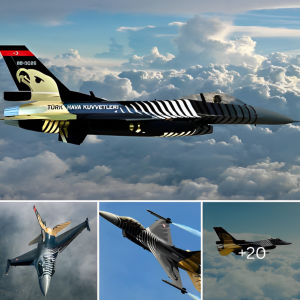The F-35 is the most expensive fighter jet on Earth. But is it worth it? Many F-35 Lightning II pilots interviewed by a think tank expert and former F-16 command pilot believe that they are flying the best fighter in the world. But the F-35 has the distinction of having the most expensive weapons acquisition program in history. It is projected to cost over $1.6 trillion over its lifecycle for 2,456 F-35s. The U.S. military signed a contract in 2019 for the delivery of 478 F-35s for the various service branches and for export sales. This deal had a price tag of $77.9 million for the Air Force F-35A, $101.3 million for the Marine Corps short takeoff and landing F-35B, and $94.4 million for the Navy carrier-based F-35C.
One Airplane Into Three
This was one of the main ideas behind the stealthy F-35 – have the same airframe serve three different services. Rather than design three separate fighters, a multi-pronged plan was believed to be a way to save money for research and development and procurement costs. The F-35 would conduct multiple missions with ample features. This would streamline the manufacturing process and save on training and maintenance. But the fifth-generation F-35 costs $36,000 per hour to fly, which is more expensive than the F-16.
Most Expensive Fighter Ever For a Reason
The program to become the Joint Strike Fighter program began in 1993 and started developing in 2001. The U.S. military wanted a new vertical take-off and landing warplane. The Pentagon knew this would be expensive and examined other existing fighters and those that were in the development pipeline. Acquisition leadership wondered if one fighter could be manufactured that would deliver on multi-mission capabilities and even replace airframes such as Harrier jump jets, F-15 Eagles, and F/A-18 Hornets.
The Expenses Kicked In
Designers and engineers thought once they created the F-35A conventional take-off and landing bird, the other fighters would be easier. That’s not what happened. It took an additional 18 months and $6.2 billion to create the F-35B with its jump jet capability. Meanwhile, the F-35A “cost $221 million when it came off the production line in 2007,” according to Reuters.
Concurrently Building Created Delays
The program decided to build the jets “concurrently” meaning they would build and test, incorporate the evaluation data into the manufacturing, and make adjustments as necessary several years before they were complete. But personnel were finding things that were wrong and they had to go back and fix those problems. This activity created schedule slip and cost ballooning into the billions. The U.S. Government Accountability Office “projected nearly $6 billion in additional costs for 2036 alone and that does not include $3.7 trillion to “operate and sustain them.” The Pentagon was buying airplanes that were not combat-effective.
Orphan Airplanes Still Needed Work
The Air Force grew frustrated. It had ordered 108 F-35As for $21.4 billion and received them but they had multiple issues that would require fixing. They were so-called “concurrency orphan birds.” The Marine Corps and Navy bought 81 early-model F-35s. These would also need to be retrofitted at exorbitant costs.

U.S. Air Force Maj. Kristin Wolfe performs a demonstration in the F-35A Lightning II during at the Reno Air Races in Reno, Nevada, September 19, 2021. The F-35 Lightning II Demonstration Team is based out of Hill Air Force Base, Utah. (U.S. Air Force photo by Tech. Sgt. Nicolas Myers)
The problems added up. The three airplanes had only 25 to 30 percent parts commonality even though they were supposed to save money on components. The cost of each flight hour is $36,000 for the F-35A and the Air Force hopes to whittle it down to $25,000 by 2025.
All Is Well That Ends Well for the Most Expensive Fighter Ever
Although the costs have been excessive over the years, many issues have been ironed out. The difficult phase of the Joint Strike Fighter program is over. It is the most advanced fighter in the world. Numerous countries have bought the F-35, putting pressure on adversaries such as Russia and China to keep up with their own stealth programs. The F-35 is here to stay, but the history of the acquisition program will supply numerous lessons learned on what not to do with an airplane program.
Most likely, the Pentagon will not try building a fighter in concurrency again.





